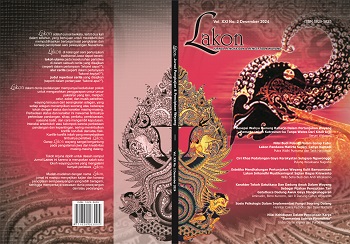Sosio Psikologis Dalam Implementasi Fungsi Seorang Dalang
Keywords:
Socio-psychology, Dalang, Pedalangan, Emotion, Wayang PerformanceAbstract
This article analyzes the relationship between social-psychology and puppetry, by examining how the five socio psychological elements—attitudes, beliefs, emotions, habits, and desires—influence the character of a dalang and the quality of wayang performances. Based on social psychology theories, this article shows how these elements shape the behavior patterns of a dalang in carrying out his profession and interacting with the audience. The dalang, as the center of a wayang performance, is required to understand and apply these five elements in order to achieve perfection in the performance and to create a harmonious relationship with the audience. The theories used in this article include the basic concepts of general psychology explained by Irwanto et al. (1991), the influence of trust and emotions in social interactions, as described by Sujanto (1993) and Damajanti (2006). Apart from that, the importance of socio-psychology in creating quality art is also highlighted, with. It is hoped that this article can provide deeper insight into the importance of understanding socio-psychology for dalang and audiences in creating meaningful performances.
Downloads
Downloads
Published
Issue
Section
License
Copyright (c) 2025 Halintar Cakra Padnobo, Dewi Nurnani

This work is licensed under a Creative Commons Attribution-ShareAlike 4.0 International License.
Authors who publish with Lakon Jurnal Pengkajian & Penciptaan Wayang agree to the following terms:
- Authors retain copyright and grant the journal the right of first publication with the work simultaneously licensed under a Creative Commons Attribution License (CC BY-SA 4.0) that allows others to share the work with an acknowledgment of the work's authorship and initial publication in this journal.
- Authors are able to enter into separate, additional contractual arrangements for the non-exclusive distribution of the journal's published version of the work (e.g., post it to an institutional repository or publish it in a book), with an acknowledgment of its initial publication in this journal.
- Authors are permitted and encouraged to post their work online (e.g., in institutional repositories or on their website) prior to and during the submission process, as it can lead to productive exchanges, as well as earlier and greater citation of published work.

This work is licensed under a Creative Commons Attribution-ShareAlike 4.0 International License.




